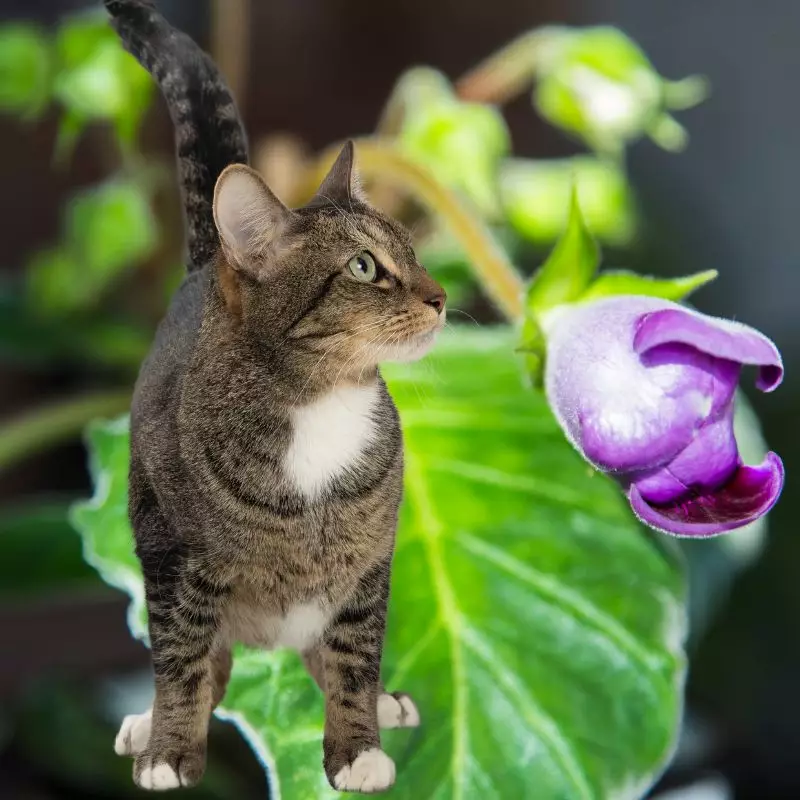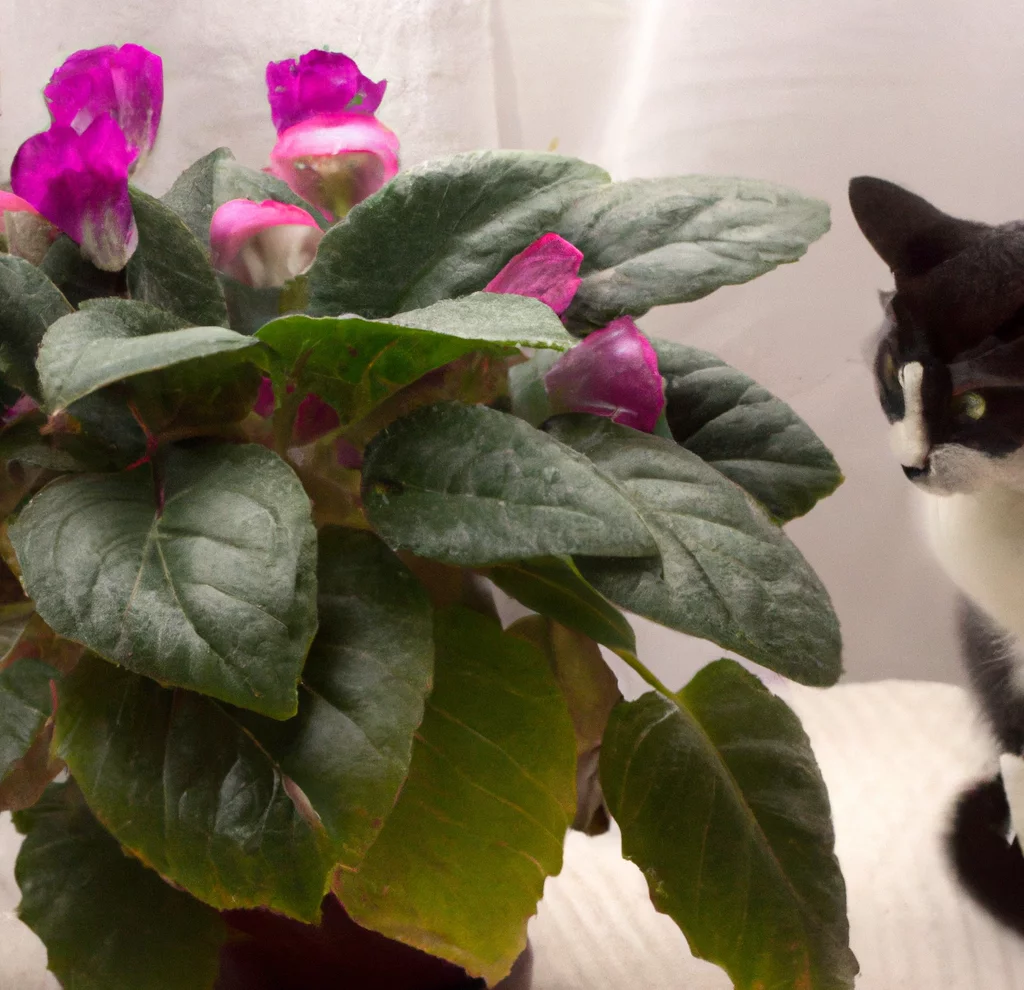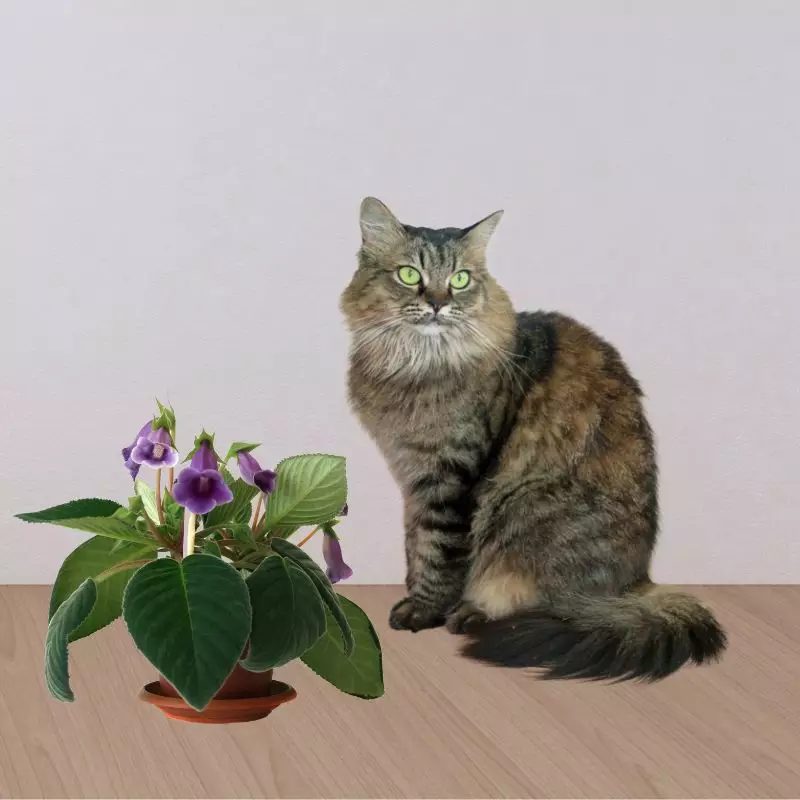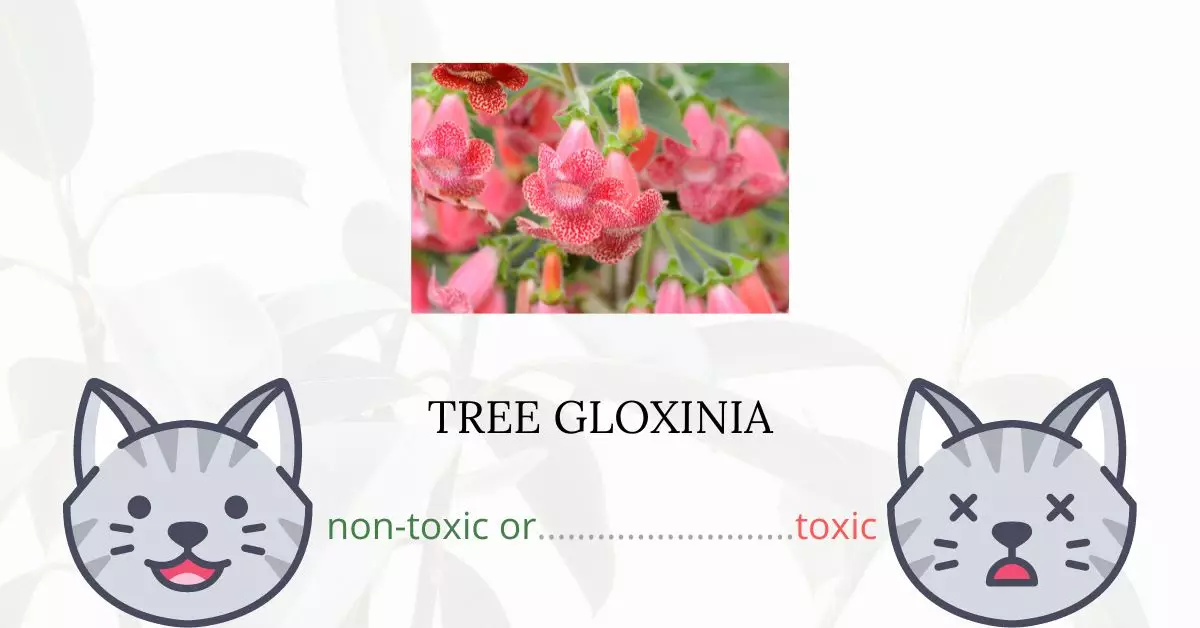Tree Gloxinia is not toxic for cats. In fact, according to the Poison Control Center of ASPCA (American Society for the Prevention of Cruelty to Animals), Tree Gloxinia is a non-toxic plant not only for cats but also for dogs and horses.
This article has been crafted in collaboration with a team of experienced DVMs (doctors of veterinary medicine). With their valuable input and our extensive research, including high-authority websites such as ASPCA and PetMD, we strive to provide you with accurate and current information on the potential risks associated with various plants, Tree Gloxinia in this case, and their effects on cats.
While Tree Gloxinia lacks toxic substances and is generally considered a safe houseplant for pet owners, it is still paramount to monitor your cats around any plants. Even non-toxic plants can sometimes cause digestive upset or other reactions if ingested.
Can Cats Eat Tree Gloxinia?

It will not endanger your cats if they have eaten a small portion of tree gloxinia. Since it does not have poisonous properties, you can ease your worries. But, you should not be complacent and let your cats devour an entire plant or eat plants regularly.
Cats’ digestive systems are not capable of processing plant particles. As a result, eating too many plants causes indigestion and other gastrointestinal issues in cats.
Your feline friends may manifest symptoms such as diarrhea, vomiting, and abdominal pain. You don’t have to fret since these will all subside after the plant materials have been ejected by their system.
What is Tree Gloxinia?

Tree Gloxinia is previously known as Kohleria lindeniana. Now, it is known botanically as Gloxinella lindeniana. Tree Gloxinia is a monotypic genus of Gesneriaceae plants native to Colombia.
It is a lovely plant with nicely variegated leaves and stunning lavender flowers that some people find to be fragrant. Its leaf underside is bright red, and the upper surface is dark green with white veins.
Gloxinia flower is sometimes mistaken for African violets, a vibrant indoor plant that is also suitable for cats. Although the flowers resemble bells more than African violets, this houseplant also has leaves that resemble lamb’s ears. The best conditions for these plants are indirect but bright light, consistently moist soil, and temperatures that remain in the seventies.
Tree gloxinia will go dormant after a period of development. Then, it will resprout from the underground rhizomes, just like other rhizomatous gesneriads. By planting pieces of the rhizomes in different pots, they can be easily propagated.
Keeping Cats Away From Tree Gloxinia

Cats don’t like certain scents, so you can use those to keep them away from your plants. Cats absolutely detest some scents and will probably avoid areas that have them, including citrus, vinegar, coffee grounds, and peppermint.
Bored cats are highly likely to nibble on plants out of boredom. Give your cats a ton of toys to keep them entertained. Keeping them occupied also enhances their general well-being. addition to keeping them away from your plants, keeping them occupied enhances their general well-being.
Cats can be scared away by natural deterrents. You can buy a variety of commercial sprays online. Because they are non-toxic, they are practical and safe to use around children and pets.
Plants to Avoid For Your Cats
If you are a cat owner and unsure if the plants growing in your yard are harmful to your cats, check out this list of toxic plants for cats. You can also check our list of non-toxic plants for cats.





